Last Updated on September 18, 2024 by Tech Queries Team
Random Access Memory (RAM) is a crucial component in any computer system, serving as the workspace where active programs and data are stored temporarily.
Its speed and capacity significantly influence a system’s overall performance, particularly in multitasking and running memory-intensive applications like video editing, gaming, and data processing.
However, it’s not just about having enough RAM; Knowing which RAM slots to use can be equally important.
Using the correct slots for your RAM sticks can affect how your system performs, especially when using dual-channel memory configurations. Knowing which RAM slots to use can maximize the potential of your computer’s hardware.
If you are not sure how many RAM slots your motherboard has, check out the article on How Many RAM Slots do I have.
Table of Contents
Understanding RAM Slots
RAM slots on a motherboard are often referred to as DIMM slots (Dual Inline Memory Module slots), and they are where you physically install your RAM sticks.
Most modern motherboards have either two or four RAM slots, with each slot supporting a specific type of RAM (e.g., DDR4 or DDR5).
Also, read this article and understand the Types of RAMs.
The slots are usually labeled in a sequential order, like DIMM1, DIMM2, DIMM3, and so on. Some motherboards use color coding to differentiate between the memory channels, which can help in choosing the right RAM slots. For example, alternating colors may indicate which slots to use first for dual-channel memory configuration. As shown in the below picture.
For example, the GIGABYTE TRX40 has 8 Ram Slots.
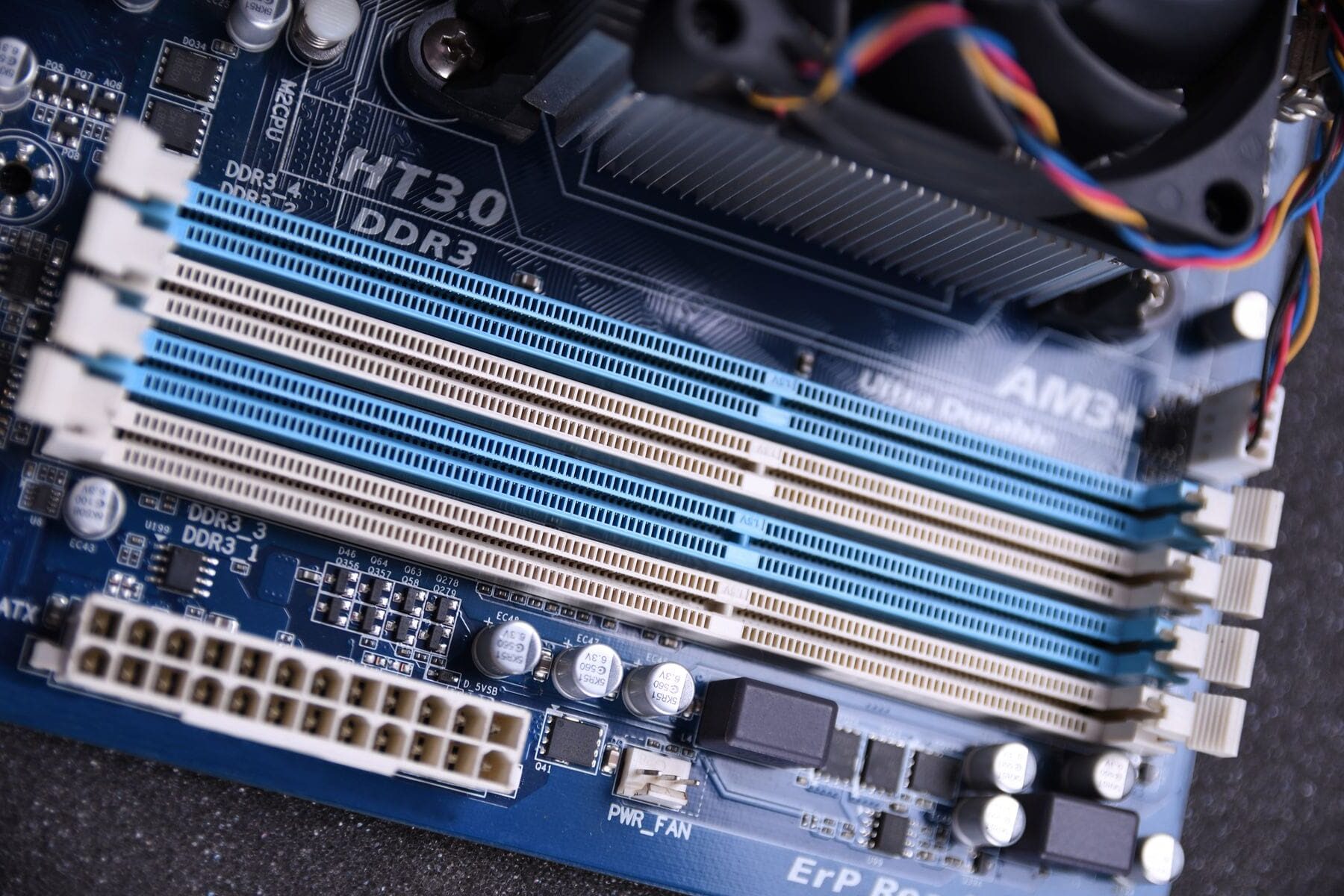
Which RAM Slots to Use?
Most motherboards label their RAM slots sequentially as DIMM1, DIMM2, DIMM3, and DIMM4. It’s important to check these labels or the motherboard manual to determine which slots correspond to which memory channels.
By knowing which slots to put RAM in, you can ensure the system runs in the most efficient memory configuration, enhancing both speed and stability.
If you have one RAM stick:
All modern computers (Motherboard) come with a minimum of 2 RAM slots, while some have 4, 8 and even 16. So, if you only have one Stick place it in the Slot that is closer to the CPU (Processor), which is labelled as DIMM1.

If you have two RAM sticks:
Now, some motherboards have 4 Slots. Usually, such motherboards have two different color sets. You can see it in the pictures below. Two Slots have the same color, and the other two have the same color.
So, if you are installing only Two RAM Sticks, place them in the same colors (alternate slots). In Slots 1 & 3 or in Slots 2 & 4.
The recommended configuration is often the second and fourth slots, known as DIMM2 and DIMM4, but this may vary depending on the motherboard’s design. Always refer to the motherboard’s RAM slot usage guide to ensure you’re installing the RAM correctly.
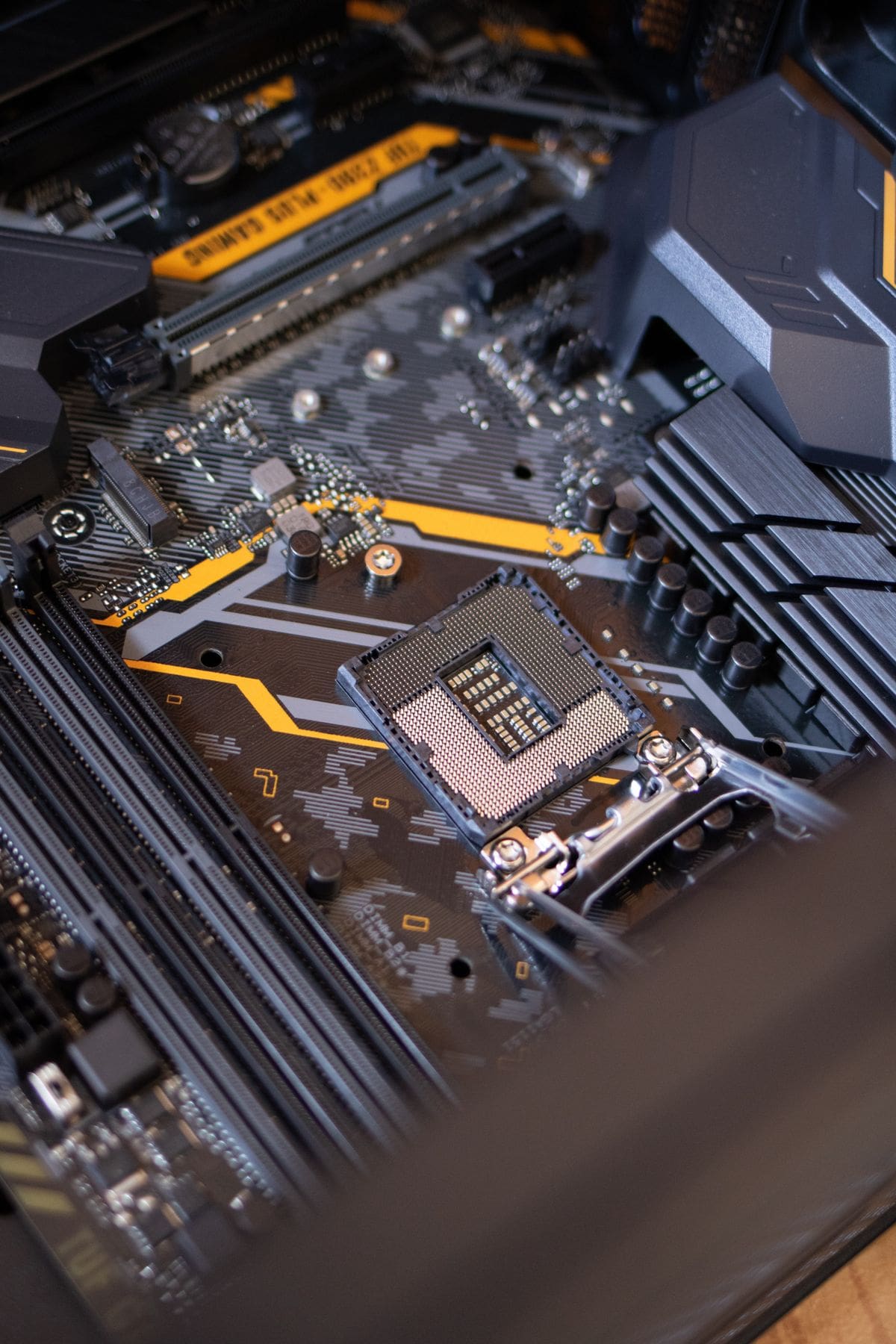
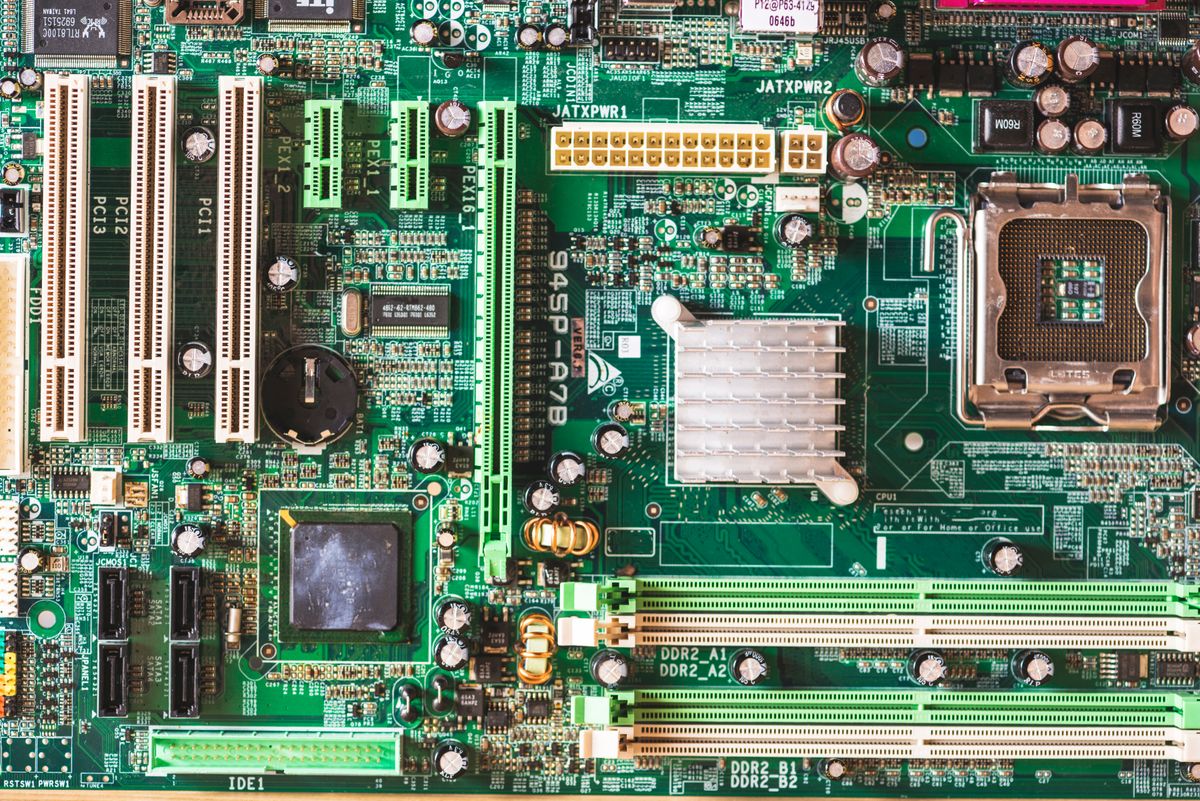
If you have four RAM sticks:
If you have a four-stick setup, you should populate all four DIMM slots (DIMM1, DIMM2, DIMM3, and DIMM4). This will activate dual-channel mode across all four sticks, ensuring optimal memory performance. In case the motherboard have more slots, use the color combination as we mentioned in the above section.
Use RAM Sticks in Pair:
We shall always use RAM in Pairs. You should use either Two RAM Sticks or Four RAM Sticks. Only then they will run in Dual Channel Mode. If you use Three Sticks, they will run in Single Channel Mode.
We have explained about in detail in our RAM Buying Guide.
So, instead of buying 3 x 4 GB Ram sticks, it is wise to use 2 x 4 GB Sticks. Or, you can use the setup of 2 x 8 GB or 4 x 4 GB.
Note that when using multiple RAM Sticks, all Sticks should be of the same Memory Size, Brand, Generation, and Clock Speed.
How to Choose RAM Slots on Laptop:
On Laptop, the RAM Slot Setup is different than on the Desktop. You will probably find Two RAM Slots in most Laptops. So, if you have only 1 RAM Stick, you should place the Stick on the lower Slot of the Motherboard.
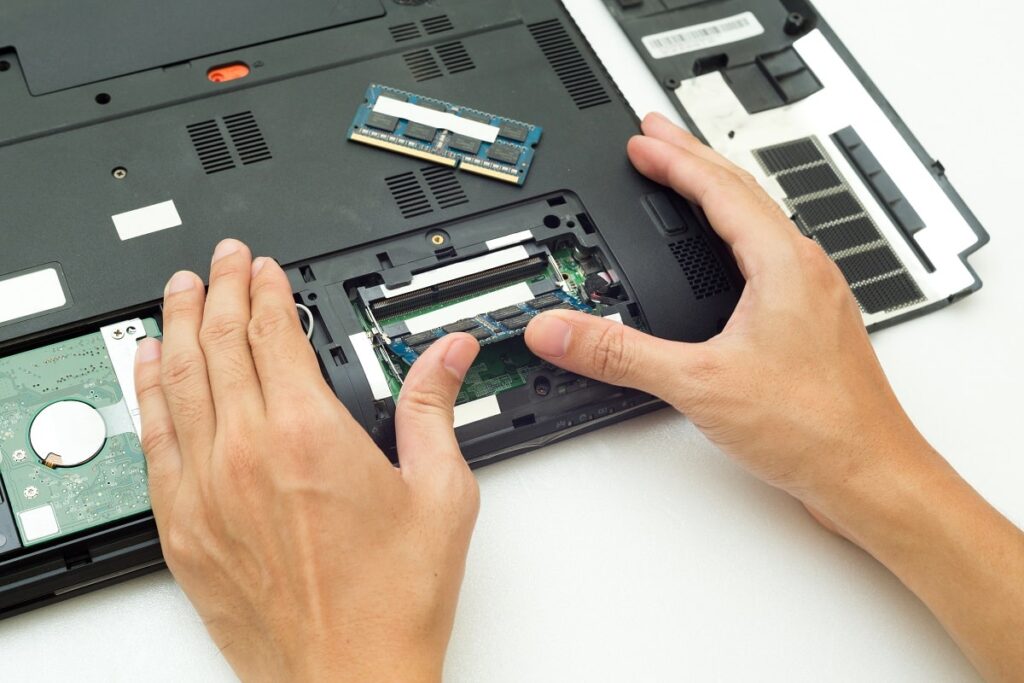
Common Mistakes People Make with RAM Installation
When installing RAM, it’s easy to make mistakes that can negatively impact your system’s performance. Some of the most common errors include:
Incorrect Slot Placement: Many users overlook the importance of slot placement, leading to single-channel instead of dual-channel operation. Not following the RAM slot usage guide can prevent you from maximizing your system’s potential.
Loose Connections: If the RAM stick isn’t properly seated, it can cause issues such as boot failure or reduced performance. RAM sticks need to be firmly clicked into place for them to function correctly.
Mixing RAM Types or Speeds: Using different RAM types or speeds (e.g., mixing DDR4 with DDR3 or different frequency RAM sticks) can lead to instability or cause the system to downclock all RAM sticks to the slowest speed.
Not Checking Compatibility: Some users purchase RAM that isn’t compatible with their motherboard or CPU, resulting in installation failures or system instability.
Not Enabling Dual-Channel Mode: Forgetting to install the RAM in the correct slots can result in single-channel mode, which offers reduced performance compared to dual-channel mode.
Best Practices for RAM Installation
Following best practices when installing RAM will help ensure your system runs smoothly and efficiently. Here are some tips for optimal RAM installation:
Refer to the Motherboard Manual: Always check the motherboard manual to understand what RAM slots to use. This ensures you’re using the correct slots for dual-channel or single-channel operation.
Seat the RAM Properly: Make sure the RAM sticks are fully seated in the slots. Press down firmly on both ends of the RAM until you hear a click. Loose RAM can cause system instability and prevent the computer from booting.
Use an Anti-Static Wristband: RAM and other components are sensitive to static electricity, which can damage them. Wearing an anti-static wristband or grounding yourself by touching a metal surface will help prevent static discharge.
Check Compatibility: Before purchasing new RAM, check that it’s compatible with both your motherboard and CPU. Ensure the RAM type (DDR4, DDR5, etc.) and speed are supported by your motherboard.
Avoid Mixing RAM Types: Whenever possible, use identical RAM sticks (same brand, speed, and size). This ensures better stability and performance. Mixing different RAM sticks can lead to compatibility issues and may prevent your system from running in dual-channel mode.
Test After Installation: Once the RAM is installed, run software like MemTest86 to ensure the new RAM is functioning correctly. This test checks for any errors or issues with the memory, giving you peace of mind after installation.
By following these best practices, you can ensure that your RAM is installed correctly and that your system achieves its full potential in terms of speed and performance.
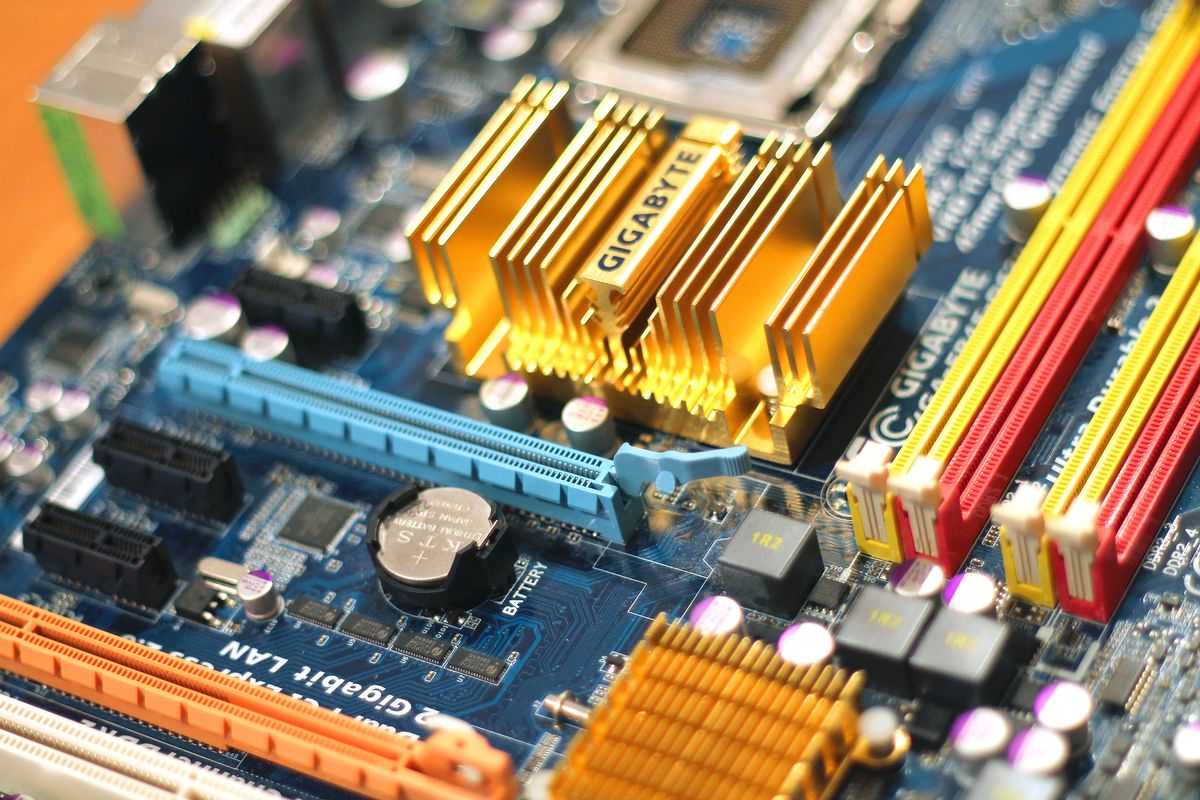
Conclusion:
Non-Technical users place the RAM Stick in a random RAM slot. But, Moderate users get confused about Which RAM Slots to Use to improve performance. So, they can follow the above method.
In conclusion, using the correct RAM slots is essential for maximizing your computer’s performance. Proper RAM installation, especially in dual-channel mode, can significantly enhance your system’s speed and efficiency.
Whether you’re building a new PC or upgrading an existing one, understanding which RAM slots to use ensures that you’re getting the most out of your memory modules.
Incorrect slot placement or improper installation can lead to reduced performance, instability, or even failure to boot.
It’s important to always consult your motherboard manual or use tools like CPU-Z to verify your system’s current configuration and ensure you’re optimizing your RAM setup.
By following the right installation practices, you can avoid common mistakes and enjoy a smoother, faster computing experience.
Take a moment to check your system’s RAM configuration, and make sure your RAM slot usage is optimized for the best possible performance!

